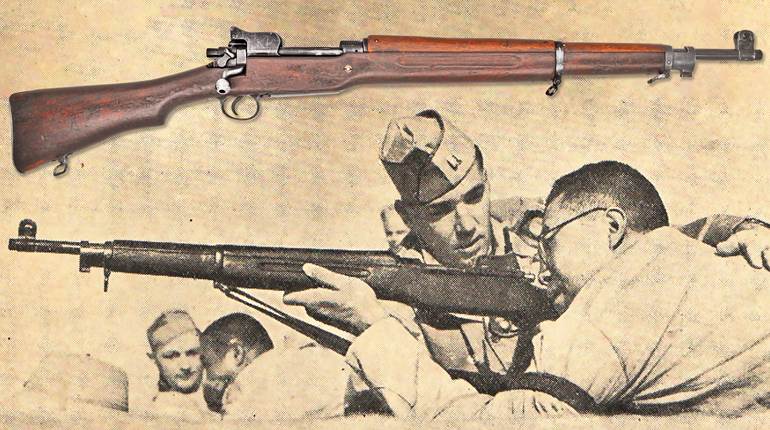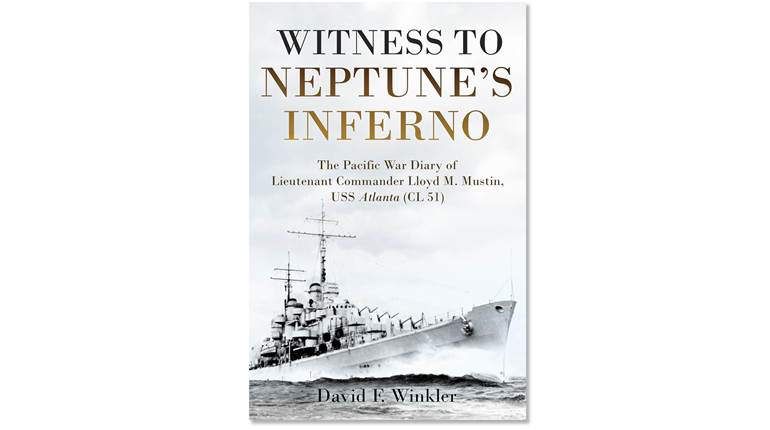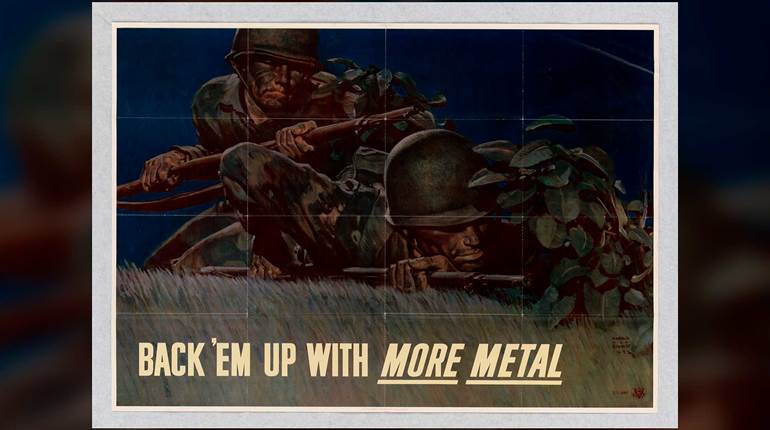
The crew of the 4"/50-caliber deck gun on the Wickes-class destroyer U.S.S. Ward (DD-139) sank a Japanese two-man midget submarine at 6:45 a.m. on Dec. 7, 1941. This is the gun and these are the men who fired the first shots that day. U.S. Navy photo

The standard, popularized narrative about Dec. 7, 1941, emphasizes the Japanese attack on the U.S. Navy base at Pearl Harbor. Because of the spectacular explosion of U.S.S. Arizona, and the extremely high loss of life on Battleship Row, it is understandable that so much attention continues to be directed toward that single part of the attack. But the Japanese also targeted every other military installation on Oahu that day. From Wheeler Army Air Field to the Naval Air Station at Kaneohe Bay to the Marine Corps Air Station at Ewa, Japanese aircraft bombed and strafed military facilities across the entire island. What happened at those other locations is every bit as important as what happened around the Pearl Harbor Navy Base because lives were lost there as well, and the face of history was changed forever. But at each of those locations, U.S. personnel also fought back. They did so in the air, on land and at sea, and they did so with some of the guns that would ultimately win the war against Japan.
The first shots of Dec. 7, 1941, were fired by Americans, not the Japanese. At 6:45 that morning, the Wickes-class destroyer U.S.S. Ward (DD-139) sighted a Japanese two-man midget submarine tailing the cargo ship Antares just a few miles south of the entrance to Pearl Harbor. Ward then brought the submarine under fire with one of its 4"/50-caliber deck guns, scoring a direct hit on the starboard side of the sub’s tower that caused flooding and consequently, sinking. The Minnesota Naval Reservists manning that gun are remembered as the men who fired the opening shots on the “Day of Infamy.”

Seventy minutes later, the first wave of the Japanese air raid started when bombs began to fall and torpedoes began to slice the waters of Pearl Harbor. Despite the early encounter between U.S.S. Ward and the Japanese midget submarine, soldiers, sailors and Marines were caught “flat-footed” by the attack when it began at 7:55 a.m. But even as explosions echoed across Oahu and combat aircraft roared overhead, some Americans on the ground began to fight back. Private First Class Melvin Thompson was on guard duty at the front gate at Marine Corps Air Station Ewa, seven miles west of Ford Island, when nine Japanese fighters, led by Lt. Cmdr. Shigeru Itaya from the aircraft carrier Akagai, began strafing the airfield. They had been given the mission of reducing Babasu Pointo Hikojo, the so-called “Barber’s Point Airdrome,” and so they came in low and fast over Ewa, attacking Marine aircraft on the ground there. Infuriated by this, Thompson walked out of the guard shack, drew his M1911A1 .45-cal. pistol, and opened fire on one of the passing fighters. At the same time, 27-year-old Lt. Yoshio Shiga’s section of nine fighters from Kaga came in over Ewa. From the cockpit of his A6M2 Zero, Shiga saw PFC Thompson facing off against him. The sight of the lone Marine shooting a handgun at a high performance combat aircraft strafing with 7.7 mm machine guns and 20 mm cannons left a powerful impression. Years later, Shiga remembered Thompson’s tenacity and fighting spirit and described the lone Marine as “the bravest American I ever met.”

Melvin Thompson was not the only Marine returning fire at Ewa that morning. In a photograph that is now quite well-known, five enlisted Marines can be seen crouching near the foundation of a swimming pool under construction, each armed with a firearm that would do a great deal of fighting on December 7th—the M1903 Springfield bolt-action rifle. All over the field, Marines pumped fire into the air at the attacking enemy aircraft. One of those men was Sgt. Duane W. Shaw, the driver of the airfield’s fire truck. As the attack began, he attempted to drive the fire truck to the flight line to put out fires among the aircraft parked there, but the bright red vehicle attracted too much attention. All four of the fire truck’s tires were quickly shot out and the rest of the vehicle was punctured by holes from Japanese bullets before Sgt. Shaw could reach the burning flight line. Undeterred, he bailed out of the fire truck with his ’03 and started shooting. Nearby, Sgt. Carlo A. Micheletto of Marine Utility Squadron (VMJ) 252 was trying to put out fires among parked aircraft from his squadron when the final strafing attack commenced. With his ’03 Springfield in hand, the 26-year-old sergeant sought cover behind a pile of lumber and began directing rifle fire at passing enemy aircraft. One of the attackers soon thundered in toward the lumber pile firing its 7.7 mm machine guns, and a single bullet struck Micheletto in the head, killing him instantly. He was one of four Marines who made the ultimate sacrifice at Ewa Field on Dec. 7, 1941.

From the swimming pool at Ewa, to emergency fighting positions that were hastily thrown together on Ford Island, the M1903 rifle put rounds into the air during both waves of the December 7th attack. For the Navy and the Marine Corps, the ’03 remained the standard-issue rifle, and it continued to serve in many of the Army units that were stationed in the Territory of Hawaii despite the standardization of the M1 Garand five years earlier. In fact, it was present on the morning of December 8th, when two Hawaii National Guardsmen walked down the beach near Bellows Army Airfield to investigate something that had washed ashore overnight. They were Lt. Paul C. Plybon and 20-year-old Cpl. David Akui from Company G, 298th Infantry Regiment. What the two soldiers found was one of the midget submarines that had participated in the attack on Pearl Harbor the day before. It had not managed to find its way into the harbor during the December 7th attack and, after depleting its batteries, drifted through the night, eventually washing up on the beach at Waimanalo Bay. By coincidence, the men of the 298th Infantry were nearby at Bellows Army Airfield, which is why Lt. Plybon and Cpl. Akui were sent to investigate. As they approached the derelict midget submarine, Akui noticed a Japanese man lying in the sand. It was 23-year-old Ens. Kazuo Sakamaki. Akui approached the Japanese submariner with his ’03 rifle at the ready and proceeded to take him into custody. Sakamaki was the first Japanese prisoner of war captured by the U.S. military during World War II.

While the M1911A1 pistol and the M1903 rifle fought effectively on December 7th, the big hero of U.S. small arms that day was the ANM2. This derivative of John M. Browning’s short-recoil-operated, belt-fed machine gun was specifically engineered for use in aircraft and came in .30-cal. and .50-cal. versions that were sometimes referred to with the nickname “Stinger.” The origin of the ANM2 dates back to a requirement issued shortly after the end of World War I. Springfield Armory produced the first version as the Model 1922, but after a series of interwar budget cuts ended government production, Colt Patent Firearms Co. began manufacturing it in 1931 as the M2. When it was standardized for “Army/Navy” use in 1933, the “ANM2” nomenclature took its final form. For the most part, the .30-cal. Stinger had the physical appearance of a downsized M1919 series .30-cal. machine gun because of the slightly smaller dimensions of its receiver, barrel and barrel shroud. This brought the ANM2’s weight down to a mere 23 lbs., compared to the 31-lb. weight of the M1919A4, but the similarities ended there. In addition to having a different receiver and barrel than the M1919, the ANM2 included a backplate equipped with spade grips and a different feed cover, extractor, barrel extension and bolt. These parts were specially engineered to allow the gun to feed from either the left or right side of the receiver, a feature that made the ANM2 .30-cal. particularly well-suited for use in aircraft. The gun’s 1,300 round-per-minute (r.p.m.) cyclic rate of fire made it an especially dangerous gun because it gave the operator the ability to deliver the highest possible volume of fire during the typically brief windows of opportunity presented during modern aerial combat scenarios. Although the modest dimensions of its lightweight barrel meant that it did not did not possess the same heat dissipating characteristics as the M1919A4’s heavy barrel, the ANM2 was intended to operate in flight at high altitudes where cooler temperatures and fast-moving airflow would prevent overheating.
By December 1941, the ANM2 .30-cal. machine gun was being supplemented in both Army and Navy service with the harder-hitting ANM2 .50-cal. machine gun. Like the smaller .30-cal. Stinger, the .50-cal. version, at 61 lbs., was still lighter than its ground combat counterpart, the 84-lb. M2 Heavy Barrel. The ANM2 .50-cal. aircraft machine gun also offered a significantly higher cyclic rate of fire (than the ground model) that approached 850 r.p.m., and it could also feed from either the left or right.
At several locations across Oahu, ANM2 machine guns were swiftly put to good use against the Japanese air raid. With enemy fighters and dive-bombers swarming Ewa Field, M/T/Sgt. Emil S. Peters rushed to a Douglas SBD-2 Dauntless dive-bomber belonging to VMSB-232, and climbed into the aircraft’s radio-operator/gunner position. The 47-year old Marine then proceeded to direct accurate machine gun fire at the enemy using the aircraft’s single, flexible mount ANM2 .30-cal. Stinger. Before it was all over, Sgt. Peters had brought down two Japanese D3A1 “Val” dive-bombers.

On Ford Island, sailors and Marines retrieved .30-cal. and .50-cal. ANM2 machine guns from ordnance storage lockers for the three patrol squadrons stationed there, and they mounted them in expedient positions made of sandbags, wood and sometimes even tent canvas. Because both calibers of ANM2 were set up on flexible pintle yokes for use in hard mounts on aircraft like the PBY Catalina, the men also had to haul out special training tripods that allowed the guns to be set up at chest height. Photographic evidence showing these positions on Ford Island reveals that the ANM2 .30-cal. machine guns were equipped with spade grips and the Navy’s flash hider specifically designed for night firing. The ANM2 .50-cal. machine guns that appear in photographs from December 7th are all mounted using an adaptor system that was equipped with a rubberized buttpad fixed to the back end of the cradle assembly, a pistol grip/trigger mechanism on the side of the cradle and a tower for mounting a telescopic site. To supply these ANM2 fighting positions with ammunition, an ad hoc ammunition-loading station was established on the island where sailors went to work belting .30-cal. and .50-cal. cartridges.
Fourteen miles to the northeast, at Naval Air Station Kaneohe Bay, sailors were doing the same thing: setting up temporary fighting positions for ANM2 machine guns. In one area of the air station a ditch had been dug for the installation of a sewage line, and five sailors set up a .30-cal. Stinger and a .50-cal. Stinger in it. They did not have the training tripods, so they used some of the framing structures in the ditch as field-expedient platforms and tied sections of rope to secure the guns.

Nearby on the parking ramp for Patrol Squadron (VP) 11, C.P.O. John William Finn directed his sailors in setting up several ANM2 machine guns and their instructional/training tripods. As the squadron’s highest ranking aviation ordnanceman, he was not only familiar with the operation of the guns, he also had full access to them and the ammunition they needed. During the following two hours, Finn personally operated a .50-cal. Stinger, delivering effective machine gun fire against Japanese aircraft attacking Kaneohe. Because he was firing from an exposed position, the 32-year-old chief drew return fire and suffered painful wounds, but he kept on fighting. Then, after the raid was over and after he had received cursory medical attention, he supervised the rearming of returning PBY flying boats. Nine months later, Finn was awarded the Medal of Honor for his actions above and beyond the call of duty on Dec. 7, 1941.

The Army also put the ANM2 Stinger to good use that day—namely, the U.S. Army Air Corps. When the attack began, aircraft of the 47th Pursuit Squadron were temporarily based on the north shore of Oahu, at the auxiliary airfield near Haleiwa, to conduct remote field gunnery training. As bombs began to fall on Wheeler Army Airfield, a group of pilots from the squadron rushed the 10 miles to Haleiwa and took to the air to oppose the enemy, but they faced a unique challenge: only .30-cal. ammunition was available there. Second Lieutenant George S. Welch and 2nd Lt. Kenneth M. Taylor both took off in B model P-40 Warhawk fighters, which were each armed with two ANM2 .50-cal. machine guns in the cowling and two ANM2 .30-cal. machine guns in the wings. When they first joined the unfolding air battle above Oahu that morning, only their wing guns were loaded. Second Lieutenant Harry W. Brown also took to the sky, but in an A model P-36 Hawk, which was armed with two ANM2 machine guns mounted in the cowling—one .50-cal. and the other .30-cal. For Brown, only the .30-cal. ANM2 was loaded. Nevertheless, he scored two aerial victories with it that day.

Once in the air, Taylor and Welch climbed to 8,000 ft. in their P-40s and flew south to Barber’s Point. There, they observed a formation of 12 Aichi D3A1 “Val” dive-bombers and, despite six-to-one odds, they both attacked. Although each man shot down one enemy dive-bomber, they quickly ran out of .30-cal. ammunition. Both pilots then flew 13 miles to the north, landed at Wheeler Army Airfield and taxied to an ammunition replenishing point. There, ground crewmen reloaded their wing-mounted ANM2 .30-cal. machine guns, and gave both P-40s a full load of .50 caliber. They did not take on fuel—just the .30-cal. and .50-cal. ammunition that let them get back into the fight. The two pilots then roared into the air again and began dogfighting over Wahiawa. By the end of the air battle, Welch had shot down four enemy aircraft, and Taylor had scored two confirmed kills with two probables. In recognition for their extraordinary heroism in action, and their coolness under fire against overwhelming odds, George Welch and Kenneth Taylor both received the Distinguished Service Cross. Harry Brown was awarded the Silver Star for the “expertness in battle” he demonstrated from the cockpit of his P-36.
These three young airmen proved that American fighting spirit was strong on the “Day of Infamy,” and that the ANM2 aircraft machine gun was a fearsome and dangerous arm. During the following 44 months, the Empire of Japan would encounter it, as well as the other guns of Pearl Harbor, over and over again during a campaign that would ultimately carry U.S. forces all the way to Tokyo Bay.

Extras:
Video--ARTV: Pacific War, Pearl Harbor, Part 1
Video--ARTV: Pacific War, Pearl Harbor, Part 2






































